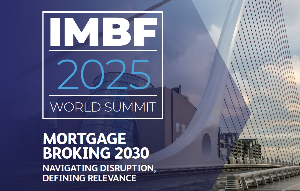
Nothing really changes for the housing market after yesterday’s drop in the OCR to 3.25%.
Some banks had already trimmed their rates before the RBNZ’s move and most have indicated they will be passing on the bulk of the OCR drop in the next few days.
Cotality (formerly CoreLogic) chief property economist Kelvin Davidson says although another renewed bout of competition is always possible, the biggest interest rate falls “may well be behind us”.
The RBNZ’s prediction for Cotality’s Home Value Index is an increase of 3.5% this year before a rise of 4.8% next year. Cotality agrees with that indication for a subdued upturn this year,” he says.
“The lagged effects of the mortgage rate falls already seen will be an upwards influence, but the slow economic recovery and the lurking impact of debt-to-income restrictions are some of the factors likely to act in the other direction.
The OCR drop is expected to bring more first home buyers into the market, Leigh Hodgetts, Finance and Mortgage Advisers Association of New Zealand (FAMNZ) country manager says.
“Members have reported a steady stream already entering the market.”
She says the recent drops in the long-term mortgage interest rates are looking attractive an as option for buyers, compared to the rush earlier this year to floating and short-term rates. “The OCR drop will bring more comfort to Kiwis as they take on new mortgages.”
Not doing enough
While two more OCR cuts have been signalled by the Reserve Bank after it dropped the OCR to 3.25% yesterday, it is the extent of the cuts that is uncertain.
Kiwibank chief economist Jarrod Kerr says the RBNZ has seen enough to cut again, and again but not enough to do enough.
“There is no doubt the Kiwi economy needs support. The risks to growth are on the downside.”
The OCR track was lowered by the RBNZ from a flat lined bottom of 3.10% to a 2.85% low in March next year. From there, there’s a 60% chance of another 0.25% cut to 2.75%.
Kerr says Kiwibank is still of the view that a 2.5% cash rate is what the economy needs. And an OCR track bottoming anywhere below 2.75% would have signalled what it had hoped to see. But heightened global uncertainty is making it harder for all policymakers to navigate.
“So, it’s not surprising to see the committee err on the side of caution. The fact the RBNZ voted 5-1, with one member voting for a pause to assess, throws some doubt on the timing of the next move, but not the direction.
One of the next two OCR cuts is projected by the RBNZ to be in September. However, Westpac sees the next cut at the August MPS meeting and it is predicting the RBNZ will hold the OCR at 3% this year.
Chief economist Kelly Eckhold says it’s too early to call time on the easing cycle. “You never know its ended when it ends. Policy is well placed to respond to whatever happens now the OCR is in the middle of the long- and short-term estimates of the neutral OCR (these range between 2.9 and 3.6%).
He says the next cuts to the OCR will affect only floating interest rates as the long-term rates are at a level they should be for some time.





Comments
No comments yet.
Sign In to add your comment